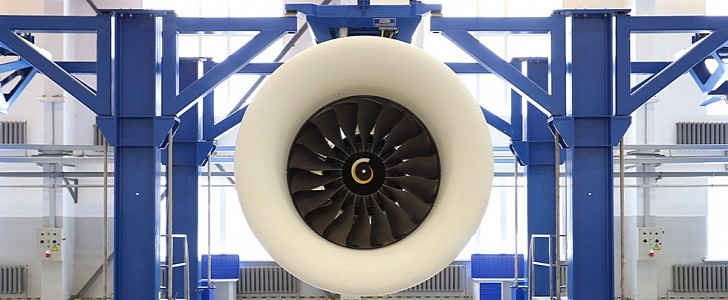Russia doesn’t play, even when it comes to vehicle testing. After testing a tank’s strength by dropping it from a tower, it has now come up with an innovative way of verifying how powerful a new aircraft engine’s core is, by using volcanic ash for the first time ever.
PD-14 might be completely unknown to aviation aficionados in other parts of the world, but in Russia it’s a well-known and well-respected name, because it’s considered “the forefather of domestic engines.” According to Rostec (Russia’s state military-economic complex), this was the first turbofan engine developed in the modern Russian Federation.
At the beginning of 2021, Rostec announced that serial production of the PD-14 engine for the new MS-21 airliner is ready to begin. This new engine that combines the latest technology with domestic materials is estimated to have up to 17% lower operating costs than similar engines and almost 20% lower lifecycle costs.
For this recent test, Rostec's United Engine Corporation (UAC) conducted a flight through a volcanic ash cloud, using ash from the Kamchatka volcano Shiveluch. The objective was to determine if the engine’s gas generator, which is considered its “heart,” would be damaged by the ash. The experiment took place at the Central Institute of Aviation Motors’ testing facility and is part of the engine’s validation process for the future European Union Aviation Safety Agency (EASA) certification.
This was a first in the history of Russian engine building. The results were encouraging – even after an hour of being submitted to these harsh environmental conditions, the power plant’s thrust wasn’t diminished. Plus, after the disassembly, it was confirmed that the power plant hadn’t been affected. In other words, the PD-14 engine maintained its performance and integrity even when facing the unusual challenge of volcanic ash.
The successful test confirms that the future MS-21 airliner will be able to operate safely even through potential dust storms or ash clouds.
At the beginning of 2021, Rostec announced that serial production of the PD-14 engine for the new MS-21 airliner is ready to begin. This new engine that combines the latest technology with domestic materials is estimated to have up to 17% lower operating costs than similar engines and almost 20% lower lifecycle costs.
For this recent test, Rostec's United Engine Corporation (UAC) conducted a flight through a volcanic ash cloud, using ash from the Kamchatka volcano Shiveluch. The objective was to determine if the engine’s gas generator, which is considered its “heart,” would be damaged by the ash. The experiment took place at the Central Institute of Aviation Motors’ testing facility and is part of the engine’s validation process for the future European Union Aviation Safety Agency (EASA) certification.
This was a first in the history of Russian engine building. The results were encouraging – even after an hour of being submitted to these harsh environmental conditions, the power plant’s thrust wasn’t diminished. Plus, after the disassembly, it was confirmed that the power plant hadn’t been affected. In other words, the PD-14 engine maintained its performance and integrity even when facing the unusual challenge of volcanic ash.
The successful test confirms that the future MS-21 airliner will be able to operate safely even through potential dust storms or ash clouds.






